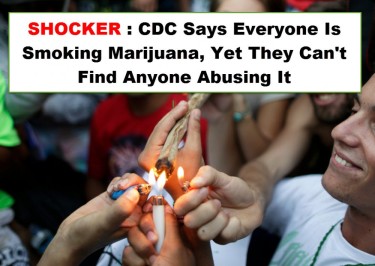
It will not be too surprising if you haven’t come across any news about the National Youth Tobacco Survey (NYTS) before. For the sake of the foundation, it is an annual survey conducted by the Center for Disease Control and Prevention (CDC). The results of the latest survey have been causing a bit of controversy of late for different reasons. Many are just concerned about the views of the CDC as projected in their youth vaping data and not looking at the results holistically. This is why we are here to help you find the best way to analyze and present the data.
The NYTS and its recurring complicated results
The first standout impact of the NYTS was in 2018 when the commissioner of the Food and Drug Administration Scott Gottlieb, responded to it. He stated then that there was an epidemic of youth vaping which sent the entire industry into a frenzy. The pronouncement resorted in youth vaping being at the tip of many people’s lips. Tabloids and headlines jumped on it and many quickly saw youth vaping as a reenactment of the war on drugs and panic spread. As it is with such things, restrictions and bans came along and the public was being swayed.
It was sad to see that when this frenzy was going around about the purported bad influence of youth vaping, many avoided the other side of the story. Nicotine vapes had been the saving grace that made many addicts quit smoking. Very little was being said about this since the FDA stated that it was an epidemic. This aspect of the data was given less airplay and so got swept under the noise of the “epidemic”. It is therefore important that the data from the survey is properly scrutinized and interpreted.
Four years on, similar problems
Four years on, the same level of misunderstanding is still being applied to the reports of the NYTS data. This is largely due to the misrepresentation being given by the media, health professionals, lawmakers, and the general public by extension. The release for 2022 will go down as the worst of the lot with inaccuracies being glorified as quality content. This has led to inaccurate reporting from different media outlets on the matter. The worst of it was a report that “more than 1 in 4 teenagers used electronic cigarettes daily”. The actual data for what this outlet was reporting is that 2.5% of youths used cigarettes daily and not 25%.
It is easy to lay the blame solely on the feed of these media outlets for gross incompetency. However, when you pay close attention to how the information is being presented by the CDC, we see a bigger problem in play. The report by the CDC stated that over one in four teenagers who reported using e-cigarettes used them daily. The removal of the clause that this statistic belongs to teens who already use e-cigarettes gives a picture of how the problem occurred.
Can we fault the CDC?
This mistake of reporting statistics in percentages the wrong way didn’t just start here, instead, it has been a problem for quite some time. While it is common among academics and researchers to use such ratios and percentages, it does not quite appear as the same for average Americans. This means it is best to stay clear of the complicated math and tell it as it is on a flat rate. If that is not done, then there might be a need for us all to do our math of the available info to get a clear picture. These problems can be avoided though if the CDC will simplify the data it puts out to the public.
The only standing reason the CDC has given through its spokesperson for these complications is that prevalence is a ratio and not a rate. This is why its results are being presented as proportions and not necessarily percentages of percentages. Prevalence deals with the proportion of persons with a condition at a time with respect to those who are at risk of that condition as a denominator. While this may the true, the reports of the CDC are still confusing the public. The spokesperson while addressing this stated that the body is always ready to provide clarity and corrections to the public whenever the need arises or inaccuracies are spotted.
Is the CDC totally without fault?
While the CDC has explained its reasons for reporting the way it does, it still does not tick all the inquiry boxes. This view has been echoed by the former director of Action on Smoking and Heath (UK) Clive Bates in his interview with Filter. He was quick to question the way the CDC was defining prevalence as it is the duty of the writer to be as clear as possible to avoid confusion.
He further went on to question if the CDC is focusing its inquiries and objectives towards the right goals. If teenage vaping is to be shown as a societal problem, Bates believes that the emphasis should first be on how many kids are vaping daily. This is the first place to start before we make the jump to start talking about how frequently those who vape do vape. This will help clear the confusion that already exists between the media and the public and help us from taking drastic decisions on inaccurate data.
Summary
While it is important that we are clearing the air on some of the mistakes that have come out with the NYTS reports, there is still more to do. It is important that the public pressures the CDC to correct these mistakes and look within to see how they can be avoided. We have stated here already that presenting the data in a clearer and more comprehensible manner will be instrumental in curbing these issues. It is therefore left for the CDC to take to this advice and save us all from being led astray.
CDC ON MARIJUANA RESEARCH, READ ON...
CDC FINDS THAT EVERYONE IS USING CANNABIS, CAN'T FIND ANY PROBLEMS






